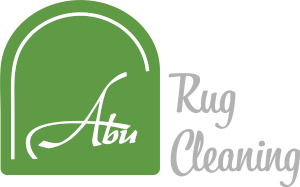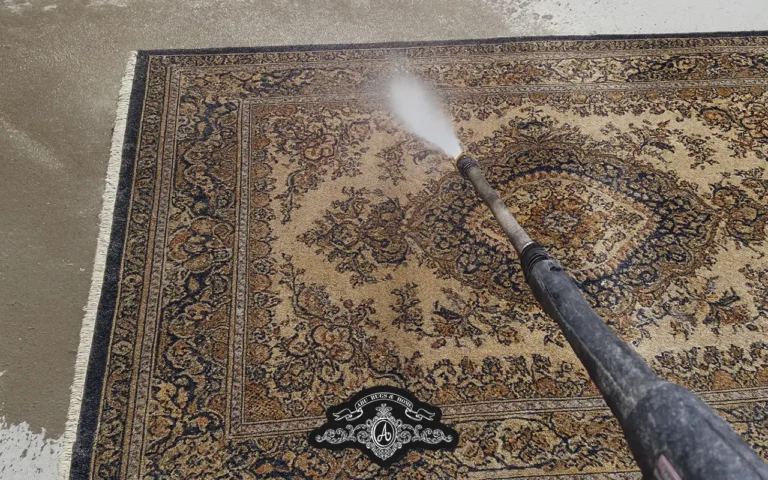Persian pieces are art you live with, made to be walked on and admired. This guide keeps things practical and friendly. You’ll see why Persian rug cleaning matters, how often to plan it, which methods are safest, what a pro service includes, what to do with spills, and how to choose a team you trust. We speak from years of hands-on work across North Carolina so you can protect your rug without stress. So, let’s get to it.
Why Persian Rug Cleaning Requires Special Attention
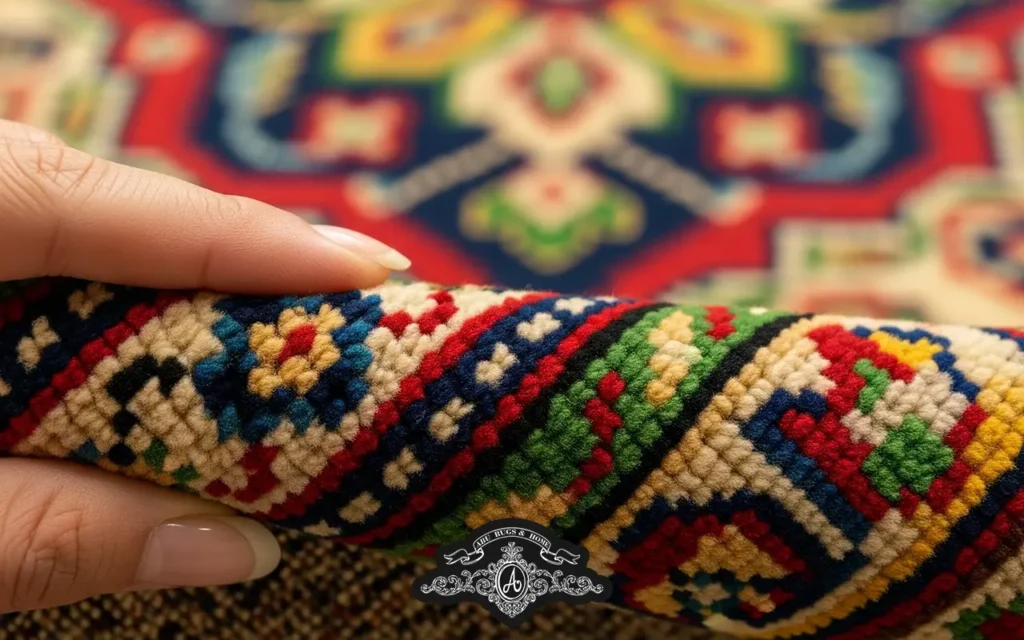
Persian rugs mix wool or silk pile with cotton foundations and natural dyes. That beauty reacts to heat, friction, and harsh products. Here we set the risks and the habits that keep your rug healthy. Early on, if you want a quick look at how a careful bath works, our Rug Cleaning Service shows the full process from dusting to dry-down, and it makes your rug fresh and gives it a new life.
Understanding the Fragility of Persian Rug Fibers
Wool carries tiny scales that can be felt with heat and motion. Silk glows but dislikes strong chemicals. Cotton warps and wefts can shrink if the water is hot or drying is rushed. Natural dyes can wander in the wrong bath. That’s why Persian rug cleaning leans on cool water, gentle movement, and patient drying. In our shop, caring for Persian rugs means short, careful passes and frequent checks. For antique rug maintenance, we support older edges and ends before any wash. And when cleaning handmade rugs, we lift the pile softly so colors stay true.
Common Damages from Improper Cleaning Techniques
Speedy machine passes can force soil deeper, distort the pile, and cause color bleed. Harsh spotters leave halos or dull the face yarn. Over-wetting without real dusting traps soil in the foundation. Our approach to Persian rug cleaning avoids those traps. For caring for Persian rugs, we secure edges and fringe first. If we see loose ends, our Rug Repair Service stabilizes them before the bath. With antique rug maintenance, small fixes early prevent bigger losses. And cleaning handmade rugs benefits from controlled rinsing that keeps waves away.
How Often You Should Schedule Persian Rug Cleaning
Different rooms see different miles. A formal room rug ages slowly; a family room rug works for its living. This section covers signs, timing by location, and easy seasonal habits you can keep between washes.
Signs Your Rug Needs Professional Cleaning
Tap the back—if a dusty cloud lifts, it’s time. If colors stay dull after a light vacuum pass, soil is clinging to the fiber. A stale smell or wavy edge also signals trouble. Our Persian rug cleaning always begins with dry soil removal because trapped dirt acts like sandpaper. Caring for Persian rugs includes watching the fringe: dingy ends often speak first. For antique rug maintenance, stiffness or a crunchy feel indicates aging cotton. And cleaning handmade rugs restores matte areas where the pile has slumped.
Frequency Guidelines Based on Rug Location
Low-traffic rooms can go 18–24 months between full washes. Busy family rooms, 12–18 months. Entry rugs often need the shorter end of that span. In our experience with Persian rug cleaning, cadence beats crisis. Caring for Persian rugs in high-traffic spots benefits from light rotation and steady dusting. With antique rug maintenance, gentler schedules help older fibers last. And cleaning handmade rugs on a regular rhythm keeps colors bright without heavy interventions.
Seasonal Considerations for Rug Maintenance
Spring and fall bring extra outdoor particles. Give rugs a light rotation, vacuum with care (no beater bar on fringe), and blot fresh spills calmly. Time your Persian rug cleaning after heavy seasons—post-summer sand or winter mud. Caring for Persian rugs also means rolling safely if floors are being serviced. With antique rug maintenance, avoid damp basements and overheated attics; stable storage wins.
What Methods Are Best for Persian Rug Cleaning
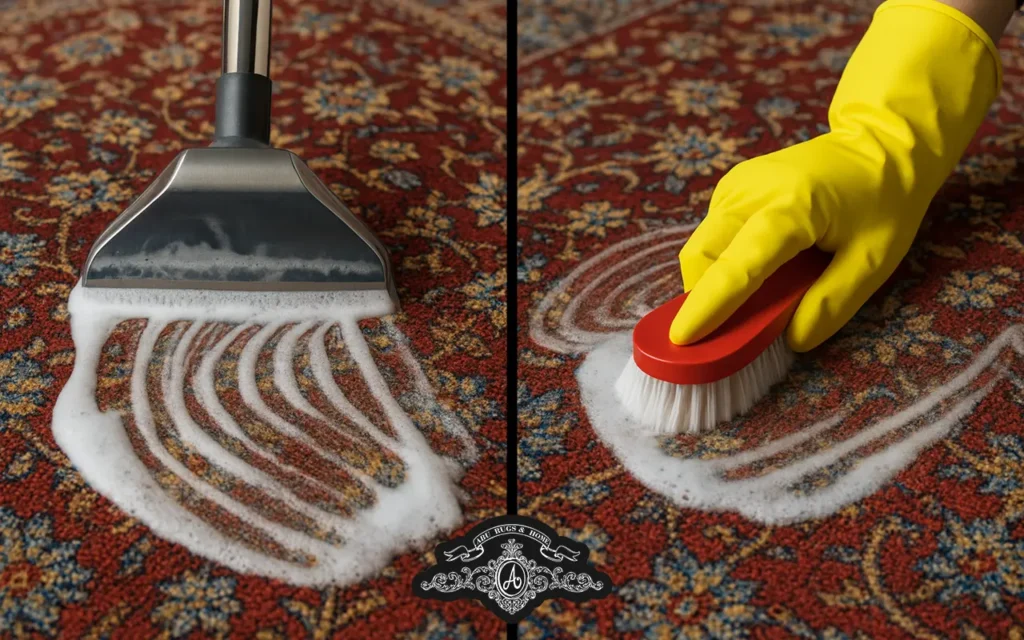
The best method respects fiber, dye, and structure. Here, we compare true hand-washing with machine shortcuts and outline earth-friendly solutions that still work for delicate pieces.
Professional Hand-Washing vs. Machine Cleaning
Hand-washing lets us control water temperature, pH, dwell time, and rinse flow. We can pause if the dye shows movement, adjust, and continue safely. Machine methods chase speed and can stress the foundation with Persian rug cleaning, slowing down wins. Caring for Persian rugs means patient work. For antique rug maintenance, hand-washing supports fragile edges and prevents puckering. And cleaning handmade rugs responds well to controlled brushing that lifts the pile without scraping.
Eco-Friendly Solutions for Delicate Rugs
We favor mild, fiber-safe detergents and a thorough rinse so nothing leftover stiffens the pile. Cool water protects dyes; patient drying protects shape. This is Persian rug cleaning that’s gentle and effective. Caring for Persian rugs thrives on “less is more.” With antique rug maintenance, we pick solutions that respect age and foundation strength. For cleaning handmade rugs, we test first, treat second, and rinse fully.
What to Expect During a Professional Persian Rug Cleaning Service
Knowing the roadmap lowers stress. Here’s how we handle intake, testing, washing, drying, and finishing work. Our team has more than 35 years of hands-on care across High Point, Winston-Salem, Burlington, Mebane, and nearby communities.
Initial Inspection and Pre-Cleaning Tests
We start with tagging, photos, and a fiber/dye review. A dye-stability test guides bath choices. We inspect edges, ends, and any prior repairs. For Persian rug cleaning, dry soil removal comes first—measured and thorough. Caring for Persian rugs also means protecting the fringe and weak corners. With antique rug maintenance, we note thinning or earlier fixes before the bath. For cleaning handmade rugs, we respect the maker’s structure so the wash works with, not against, the weave.
The Step-by-Step Cleaning Process
First, controlled dusting to release embedded soil. Next, a cool bath with gentle motion and fiber-safe solution. Then, a careful rinse until water runs clear. For heavy spots, targeted treatment—soft brushes, small zones, no harsh scrubbing. This sequence defines Persian rug cleaning that protects color and feel. It’s also part of caring for Persian rugs: slow, steady, clean. With antique rug maintenance, pauses let us reassess. For cleaning handmade rugs, the aim is a refreshed pile that stands evenly. If a mark persists, our Rug Stain Removal Service adds focused help and can solve the problem.
Drying and Final Grooming Techniques
Drying sets the finish. We wick moisture, then use controlled airflow—no high heat. While drying, we groom the pile so it sets smoothly. In Persian rug cleaning, this step is as important as the wash. Caring for Persian rugs includes blocking to shape and light brushing. With antique rug maintenance, we support delicate ends so they don’t curl. For cleaning handmade rugs, we end with a soft comb and a final pass to align the nap. If a rug is headed to storage, our Rug Storage Service keeps it safe and breathable.
How to Handle Stains and Spills Before Cleaning
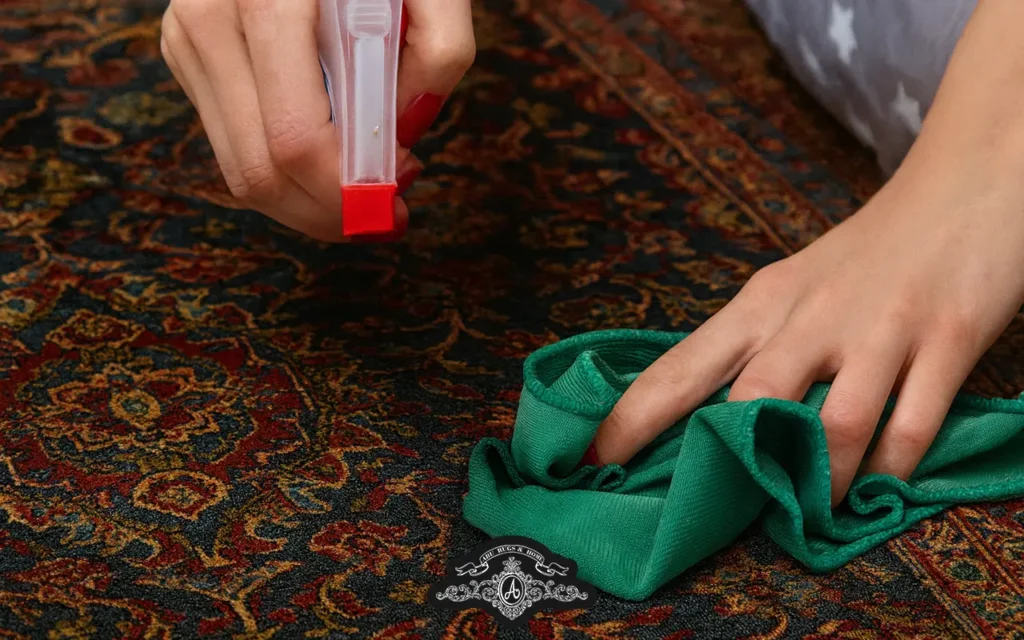
Life happens—drinks, muddy shoes, a drip of sauce. Quick, calm action now saves work later. These steps help without causing new trouble, and the “don’ts” protect color and fiber.
Immediate Steps to Prevent Permanent Damage
Blot with a clean white cloth. Work from the outside in to keep the spot from spreading. Add a little cool water and blot again—light pressure, no rubbing. That is caring for Persian rugs in the moment. If the spill has a strong color, avoid heat. For antique rug maintenance, lift solids with a dull spoon. For cleaning handmade rugs, stop if color transfers to the cloth. Then call for Persian rug cleaning support so we can test safely and treat the area without pushing the spot deeper.
What Not to Do with Persian Rug Stains
Skip hot water, steam, aggressive scrubbing, and strong random spotters. These moves can set stains, spread dye, or rough up the face yarn. Caring for Persian rugs means patience and light motions. With antique rug maintenance, a harsh cleaner can do more harm than the spill. For cleaning handmade rugs, “more product” rarely means “better.” If the damage needs a plan, our Rug Appraisal Service helps identify fiber, dye type, and past treatments that shape the best approach.
Where to Find Trusted Persian Rug Cleaning Experts
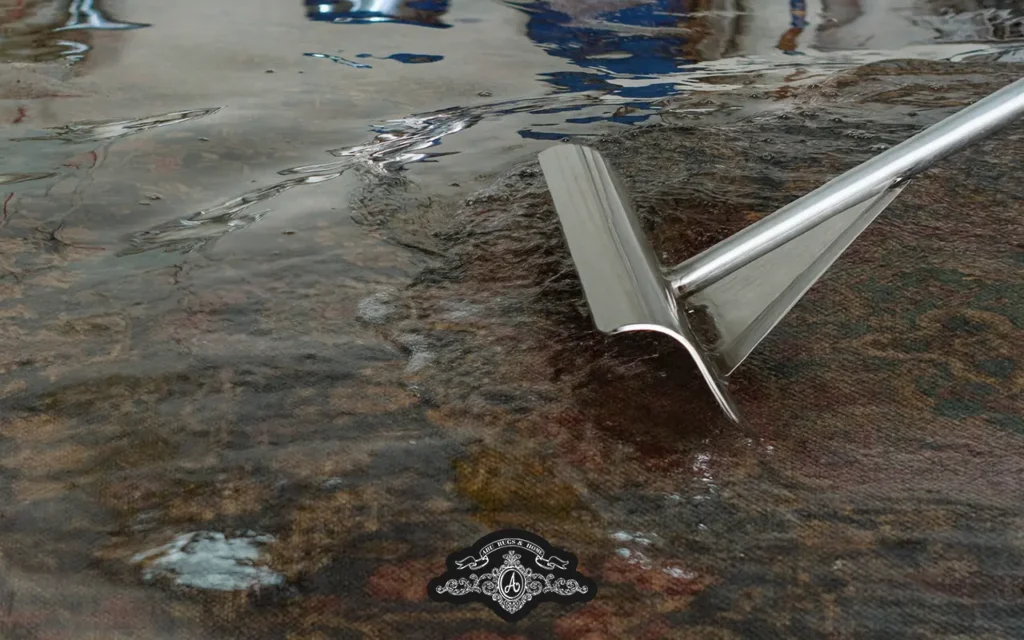
Trust comes from steady work, clear talk, and results you can feel underfoot. We’ve spent decades caring for pieces across the Triad and beyond. Here’s how to spot a team that treats your rug as carefully as you do.
Key Traits of a Reputable Rug Cleaning Service
Look for a dedicated wash space, dye-stability testing, controlled drying, and experienced hands. A good shop explains steps in plain language and invites you to see the process. Our Persian rug cleaning is built on inspection, testing, and careful baths. That is the backbone of caring for Persian rugs. For antique rug maintenance, the team should discuss risks and set expectations. For cleaning handmade rugs, they should finish by aligning the nap. If edges need help, our Rug Repair Service can rebind or stabilize.
Questions to Ask Before Booking a Cleaning
Confirm they perform dye tests and document the rug before work begins. Ask about dry soil removal, rinse steps, and drying controls. Simple, steady answers matter. With Persian rug cleaning, transparency avoids surprises. Caring for Persian rugs benefits from clear plans. For antique rug maintenance, look for support on fragile areas and honest talk about outcomes. For cleaning handmade rugs, confirm that pile grooming is part of the finish.
Conclusion
Your rug tells a story under every footstep. Treat it with calm, steady care, and it will return the favor; color that still sings, pile that feels right, edges that hold. Thoughtful Persian rug cleaning is a rhythm: inspect, dust, wash, rinse, dry, and groom. Keep caring for Persian rugs with small habits between washes. Respect antique rug maintenance with early fixes and gentle storage. And trust cleaning handmade rugs to hands that move at the right pace. When you’re ready for help, we’re nearby with more than three decades of experience and are glad to help you out.
